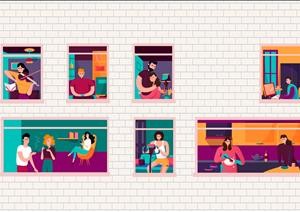
The advancement of technology has led to the rapid growth of platforms that have improved our marginal social benefit by creating more efficiencies within our everyday lives. Within real estate, we have seen this phenomena with the advent of shared workspaces or co-working which is rapidly disrupting the traditional commercial real estate space. However, this wave of innovation has not stopped there and has started to seed itself into our living spaces with the birth of coliving.
Amid changing lifestyles and stratospheric housing prices across the world, co-living has gained substantial traction within the property market as an alternate flexible accommodation option. This modern form of urban housing is not a new concept, with other forms of shared spaces already in existence; e.g. hotels, serviced apartments, hostels etc. Building upon a similar model, co-living innovates by providing a curated social environment that builds upon the community via three distinguishing characteristics.






